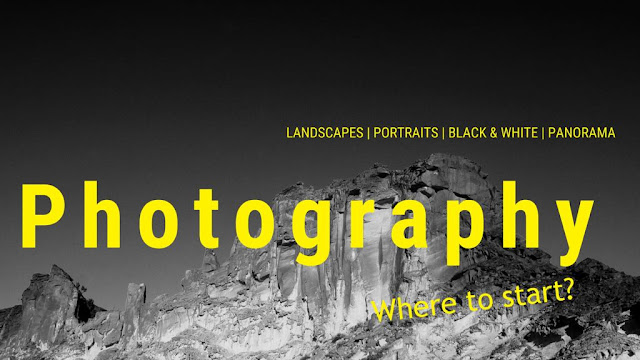
Have you ever been captivated by the power of a single photograph? The way it freezes a moment in time, preserving emotions, beauty, and stories within its frame. This article will help you figure where or how to start photography.

Photography has a unique ability to transport us, allowing us to relive memories and experience the world through someone else’s eyes. If you’ve ever felt the urge to explore this captivating art form, you’re in the right place. In this guide, I will walk you through the essential steps to embark on your photography journey and also share with you some of my personal experiences. Whether you’re an absolute beginner who is confused about where to start photography or someone looking to refresh their skills, these foundational insights will set you on the path to capturing breathtaking moments and sharing your unique perspective with the world. So, grab your camera – or even just your smartphone – and let’s dive into the world of photography.”

There is no single road to get into photography or to learn how to make money with photography but this steps will guide you through your journey on where to start photography.
Find Your Inspiration
Personally I had always been drawn to nature and abstract photography, but as I got to study more I got to love street Photography and Portraits.
Finding inspiration for photography can be as simple as looking at the world around you with a fresh perspective. Start by observing your surroundings closely – even everyday objects can become interesting subjects. Experiment with different angles and lighting to bring out unique aspects.
Nature is a great source of inspiration. Explore parks, forests, or beaches and capture the beauty of landscapes, plants, and wildlife. Urban environments also offer endless possibilities – capture the hustle and bustle of streets, architecture, and people going about their lives.
A good way to finding inspiration is by figuring what you love to do, if you love travelling you can get into Travel Photography , feel free to check out Types of Photography and figure out which one best suites you.
Understand Your Camera

Familiarize yourself with your camera’s settings, including aperture, shutter speed, and ISO. Learn how they affect your photos and experiment to understand their interactions.
Practice adjusting settings in different scenarios, understand how they impact depth of field, motion blur, and noise.
Master Composition Basics
Focus on framing and composition techniques like the rule of thirds, leading lines, and symmetry. These simple principles can make a big difference in your photos’ visual impact.

Use the rule of thirds for balanced compositions, Utilize leading lines to guide the viewer’s eye also Experiment with framing to add context and focus. This picture was taken using the concept of leading lines.
I will be dropping a course to explain more on composition, it adds great value and style in photography.
Lighting
Lighting is an essential part of photography. Lighting can dramatically alter the mood and impact of your photos. Learning to use and manipulate light effectively is a fundamental skill in photography.
Artificial light allows more control; experiment with different sources like lamps, flashes, or studio lights.

Natural light offers softness and warmth, best during the golden hour (shortly after sunrise or before sunset).

Exploring Your Surroundings
Find beauty in everyday objects and textures, Capture candid moments of people in their environment, seek out different perspectives and angles.
Start by capturing everyday objects and scenes with a fresh perspective. Both nature and urban environments offer a wealth of opportunities for interesting and unique shots.

Understanding the Exposure Triangle
The Exposure Triangle sounds complicated, but it’s not! It’s just three key elements: ISO, Aperture, and Shutter Speed. ISO affects sensitivity, Aperture controls depth of field, and Shutter Speed handles motion. Balancing these three elements is the key to understanding photography.
Shooting in RAW
Think of RAW as your secret weapon. It captures all the data your camera sensor sees, giving you more control in post-processing. Most cameras offer a RAW mode; just find it in your settings and prepare to be amazed by the extra flexibility it provides.
Learn and Practice
Study photography resources, tutorials, and courses to enhance your skills. Practice regularly, review your shots critically, and learn from your mistakes to improve over time.

In conclusion, embarking on your photography journey is about passion and creativity. Along with the understanding of camera basics and composition techniques, you have the power to transform everyday scenes into captivating images. Remember that lighting is important whether it’s the soft glow of sunrise or the interplay of artificial sources. Exploring diverse subjects, from nature’s beauty to urban landscapes, broadens your artistic horizons. But most importantly, practice and persistence are your best companions. Each click of the shutter brings you closer to mastery. So, as you get into this visual world, keep learning, stay inspired, and let your unique perspective unfold through every photograph you capture.

